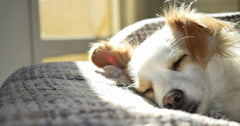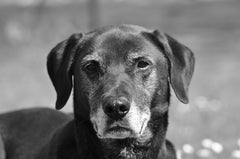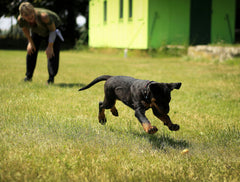
If you have ever heard of the Daniff breed, they are certainly something of beauty. This exotic dog breed is a mix between an English Mastiff and a Great Dane.
They make great guard dogs because they are protective. They're also smart, and lovable - qualities they get from both parents. You might also hear a Daniff being called English Daniff, Mastidane, or a Great Daniff.
If you have a big backyard or place for a Daniff to run around, this might be the dog that you want to bring into your family. Learn more about the great dane mastiff today to see if it is the dog breed for you.
Characteristics of the Daniff Dog Breed
If you are looking into getting a Daniff dog, you will first want to learn more about their characteristics. Some of the characteristics that you might want to know include the following:
- Great for beginner dog owners
- Adapts great to different-sized living spaces
- Can tolerate staying on their own for a bit
- Can tolerate colder weather
- Can tolerate hotter weather
- Affectionate with kids and other dogs
- Not usually mean with strangers
- Grooming is quite easy
- Does drool quite a bit
- Risk for being overweight or obese, preventing obesity is important
- Quite easy to train
- Tendency for barking, certainly not a barkless dog
- May nip (especially the daniff puppies)
- Highly energetic (needs regular exercise)
- Playful
These are some of the most important characteristics that you should keep in mind if you are going to get a Daniff dog.
Physical Characteristics, Lifespan, and Other Highlights of the Daniff Dog Breed
When looking into the Daniff dog breed, you will find that they average 27 to 33 inches when full-grown. They are usually between 115 to 190 pounds full-grown, as well. Usually, a Daniff dog will live to be 8 to 12 years.
In addition to this information, there are some other highlights regarding the Daniff dog that you might want to know more about, too. The main coat colors for this dog breed are black and white, fawn, or brindle. However, sometimes this dog breed can be harlequin and merle. Their coats are usually short. They won’t shed much or at all. If you would like your Daniff dog to socialize with other dogs, other animals, or children, be sure to teach them earlier (if possible).
History of the Daniff Dog
Research shows that the Daniff dog originated somewhere in the United States during the last 15 years. They are a designer breed and are becoming quite popular. With their excellent personality and show qualities, many people are using these dogs as show dogs. However, they make for great family pets, too. You can get a Daniff dog from breeders, animal shelters, and other places.
Common Health Issues with the Daniff Breed
If you are going to get a Daniff dog, it is important that you are familiar with the common health conditions amongst this breed. While your specific Daniff dog might be healthy, some of the health issues that are common in this breed include the following:
-
Cancer
- Elbow and hip dysplasia
- Bloating
-
Heart issues
If you want to help keep your Daniff dog as healthy as possible, there are some care tips that you need to follow.
First of all, your dog should attend regular veterinary appointments. This way, if there are any health issues, the veterinarian can catch them early. Treatment can be provided if necessary, as well.
In addition to these appointments, part of basic pet hygiene is keeping up with your dog’s oral health. Daniff dogs should have their teeth brushed every day. While bigger dogs don’t usually have as many dental and oral issues as smaller dogs, this is still very important.
To help your Daniff dog prevent joint issues and hip dysplasia, you should help them keep their weight managed. Too much weight will stress the joints and cause increased problems.
You should also take your Daniff dog on a 30-minute walk every day. They should have toys that they can play with every day, as well.
Finally, you need to check your dog’s ears often. Since they have floppy ears, there is a higher risk of build-up of debris. Your dog’s veterinarian will let you know how often you should be cleaning out their ears. If their ears smell, they could have an infection and you should schedule them a veterinarian appointment.
If you can do all of these things, you can help to keep your Daniff dog healthy and happy.
Feeding Daniff Dogs
Daniff dogs generally need a specific diet. They are bigger breeds, so they will need to eat more than smaller breeds. As a puppy, these dogs are quite energetic. They have a fast metabolism, too.
With this being noted, Daniff dogs are prone to bloating. Due to this fact, you need to keep an eye on your puppy when they eat. Be sure they aren’t eating too fast. If your dog does gain too much weight, this can cause issues on their joints. It can lead to other health issues, as well.
Just like every other dog breed, Daniff’s will need to change the food they eat as they grow. This means they will need a certain type of dog food when they are a puppy. They will need a different type of dog food as they become full-grown. If your dog makes it to senior years, they might need a different dog food at that point, too.
If you want to know which large breed dog food brand is best for your Daniff dog, speak to the veterinarian to see what they recommend.
Conclusion
These are the top facts regarding the Daniff dog breed. If you are thinking about getting this type of dog, be sure to care for them properly and play with them often. By doing this, you can help them to stay healthy and happy.
Do daniffs drool?
What are daniff dogs?
Are daniffs good guard dogs?
Check out our blog and follow me on LinkedIn to stay up-to-date!




